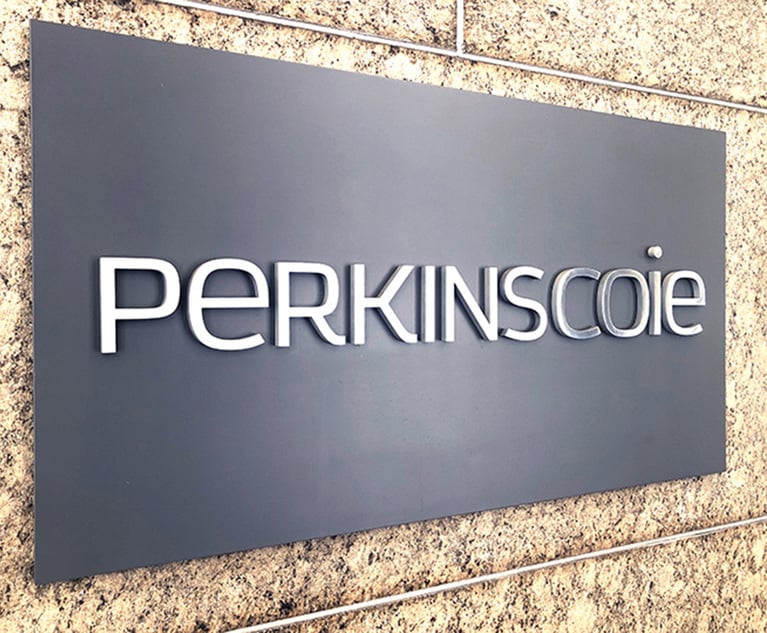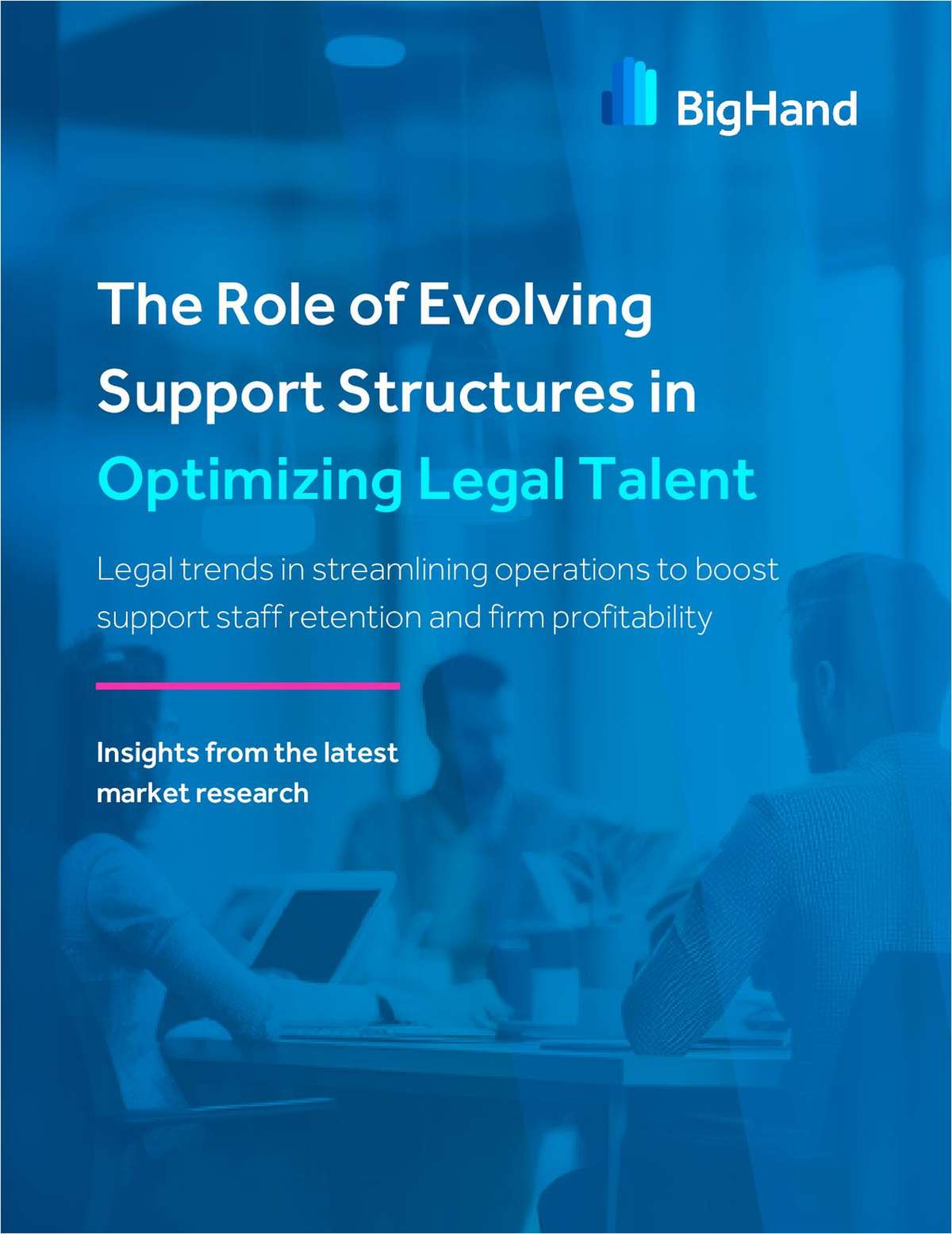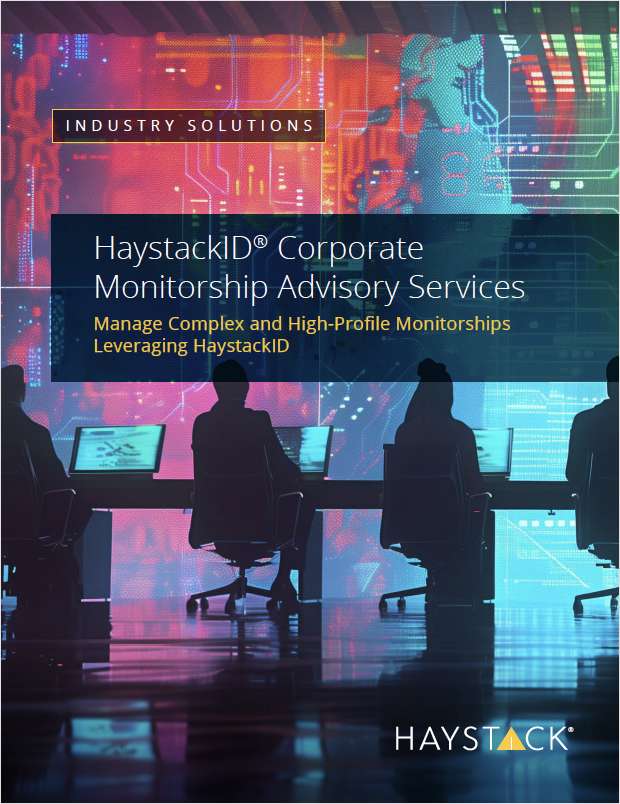The New Patent Venue Regime
Venue in patent cases lies “in the judicial district where the defendant resides, or where the defendant has committed acts of infringement and has a regular and established place of business.”
November 03, 2017 at 01:04 PM
11 minute read
Venue in patent cases lies “in the judicial district where the defendant resides, or where the defendant has committed acts of infringement and has a regular and established place of business.” 28 U.S.C. §1400(b). Since 1990, the Federal Circuit interpreted the term “resides” coextensively with the general venue statute such that patent venue lay where the defendant was subject to personal jurisdiction. See, VE Holding Corp. v Johnson Gas Appliance Co., 917 F2d 1574, 1578 (1990). Minimum contacts required for personal jurisdiction are substantially less than a “regular and established” place of business. So, the court's broad definition of “resides” essentially made §1400(b)'s alternative phrase unnecessary. But this year, the Supreme Court greatly narrowed that definition. See, TC Heartland v. Kraft Foods Group Brands, 137 S. Ct. 1514, 1517 (2017). The Federal Circuit, in turn, interpreted the newly-relevant alternative phrase. In re Cray, ___ F.3d ___, 2017 WL 4201535 at 4 (Fed. Cir. 2017). After two decades of relaxed patent venue rules, these decisions work a seismic shift in patent litigation.
[PremCon id="testid"] This article appeared in The Intellectual Property Strategist, and ALM publication for Intellectual Property Practitioners, Patent Attorneys, Corporate Counsel, In-House Counsel. Visit the website here.[/PremCon]
This article appeared in The Intellectual Property Strategist, and ALM publication for Intellectual Property Practitioners, Patent Attorneys, Corporate Counsel, In-House Counsel. Visit the website here.[/PremCon]
Now, patent venue lies either: 1) where the defendant “resides”; or 2) where a) an act of infringement occurs, and b) the defendant has a “regular and established place of business.” A domestic corporation resides “only in its State of incorporation.” TC Heartland, 137 S. Ct. at 1517. The Federal Circuit identified three requirements for a “regular and established place of business: “(i) “physical place” in the district; (ii) which is “regular and established;” (iii) and which is “of the defendant.” Cray, 2017 WL 4201353 at 4.
The Cray Decision
The Supreme Court's TC Heartland decision kicked off a flurry of venue challenges, including Cray, Inc.'s, challenge in the Eastern District of Texas. There, Raytheon asserted patent infringement against Cray's supercomputers. See, Raytheon v. Cray, No. 15-cv-01554, 2017 WL 2813896 at 4-5 (Transfer Order). But as a Wisconsin corporation, Cray did not “reside” in the forum. So, it challenged venue under §1400(b) claiming it had no “regular and established place of business” in the forum. Cray, 2017 WL 4201353 at 2. Cray's only connection to the forum was a sales employee (responsible for hundreds of millions of dollars in sales) who lived in the district and worked from his home office. Transfer Order at 5-6. To the district court, the residence qualified as a “regular and established place of business” because it was the Cray employee's primary worksite. Id. at 8-9. The court — for “the benefit of [other] litigants and their counsel” — proposed a four-part balancing test to define a “regular and established place of business”: 1) “any … physical presence in the district” (office, inventory, equipment, property, store, or employee presence); 2) defendant's representations; 3) benefits received; and 4) targeted interactions with the district. Id. at 11-13.
Cray sought, and the Federal Circuit granted, mandamus relief, vacating the district court's order. Cray, 2017 WL 4201353 at 1. The court rejected the four-factor test as “not sufficiently tethered” to Section 1400(b). Id. at 5. Instead, the Federal Circuit defined a regular and established place of business as: 1) a “physical place” (not merely any physical presence); 2) which is “regular and established;” and 3) and “of the defendant.” Id. at 4.
The “physical place” element requires a “physical, geographical location in the district from which the business of the defendant is carried out,” although not necessarily a “formal office or store.” Id. at 5. The “regular and established” element excludes “sporadic activity” as not “regular” and (even repeated) “temporary presence” is not “stable” enough to be “established.” Id. at 5-6. Finally, the “of the defendant” element does not categorically exclude employees' residences, but the defendant must “establish or ratify the place of business” — for instance, by owning or leasing the place, exercising possession or control, conditioning employment on continued residence, or representing the location as the defendant's place of business. Id. at 6.
The Federal Circuit decided the appeal on the third element: a salesperson's home was not “a regular and established place of business of Cray” sufficient for venue. Id. at 7 (emphasis in original). The court found that the salesperson's location was unimportant to Cray, Cray had no intention to remain in the forum if he moved, and Cray did not own or possess his home. Id. at 7-8.
Impact and Strategy Considerations
TC Heartland and Cray reshaped the patent venue landscape. A study comparing patent filings in the four months before and after TC Heartland found a dramatic shift away from the Eastern District of Texas and to the District of Delaware, the Central District of California, the Northern District of California, and the Northern District of Illinois. See, Ryan Davis, “Delaware Booming, Texas Fading As TC Heartland Takes Hold,” Law360.com (Sept. 21, 2017) (E.D. Tex.: 62% decrease in filings; D. Del.: 77% increase; C.D. Cal.: 39% increase; N.D. Cal.: 119% increase; N.D. Ill.: 64% increase). After Cray, there is every reason to believe this trend will accelerate as plaintiffs abandon, and defendants transfer from, prior forums. Important considerations in this new regime are examined below.
Patentee Considerations
Strict construction of §1400(b) is likely the name of the new patent-venue game. In choosing between districts within a state, plaintiffs should seriously consider the district of incorporation. Although TC Heartland left open the question of choosing between districts in a multi-district state, defendants may argue that the Supreme Court's language and interpretation in TC Heartland is narrow and strict. Courts may reject the normal, personal jurisdiction-based test for residency in multi-district states (28 U.S.C. §1391(d)), just as the Supreme Court rejected Section 1391's definition of “resides.” “Reside,” for patent purposes, may come to mean the actual district of incorporation. In the same vein, a court has interpreted Cray's “of the defendant” requirement strictly, transferring a case where the in-forum store was owned and operated by the defendant's retail subsidiary, not the defendant directly. Symbology Innovations v. Lego Sys., No. 17-cv-00086, slip op. at 4 (E.D. Va. Sept. 28, 2017).
Plaintiffs should also give careful consideration to the relative (and perhaps recent) overcrowding of a district's docket with patent cases. Recently, the District of Delaware granted a transfer motion due, in part, to docket overcrowding. See, MEC Resources v. Apple, No. 17-cv-00223, slip op. at 8-9 (D. Del. Sept. 15, 2017). While judicial resource considerations are not new to venue challenges, they are likely to take on renewed importance as the weight of the patent system redistributes itself across the district courts.
Even strictly construed, Cray potentially provides patentees with multiple possible venue choices. Plaintiffs can frequently choose between Delaware (where many companies are incorporated) and major metropolitan centers, such as Los Angeles (C.D. Cal.), Silicon Valley/San Francisco (N.D. Cal.), Chicago (N.D. Ill.), and Manhattan (S.D.N.Y.). These districts are among the most likely to have participating judges in the Patent Pilot Program. Margaret Williams, Rebecca Eyre, and Joe Cecil, Federal Judicial Center, “Patent Pilot Program: Five-Year Report” (April 2016) (C.D. Cal.: 6 participating judges, constituting 15% of the district; S.D.N.Y.: 10 participating judges, 18%; N.D. Ill.: 13 participating judges, 30%). The Patent Pilot Program provides discretion to transfer within a district to a “ designated” patent judge. Designated judges have greater patent expertise and (in general) faster resolution for patent cases. Id. at 18-23. Notably, a multivariable regression analysis of merits outcomes in patent cases revealed patentee-advantages in the Southern District of New York and the District of Delaware. See, John R. Allison, Mark Lemley & David L. Schwartz, Understanding the Realities of Modern Patent Litigation, 92 TEX. L. REV. 1769, 1791-95 (2014).
Defense Considerations
After a game-changing summer, defendants sued in an undesired venue should consider a transfer motion. For example, a transfer may benefit defendants if proper venue lies in the Central District of California or the Northern District of Illinois, where at least some research has indicated a defensive advantage. Allison, et al., supra at 1791-95.
Defendants already beyond the pleadings may have trouble transferring. In the wake of TC Heartland, courts have split concerning whether defendants waived objections to venue by failing to challenge it in their first responsive pleading. Compare Navico, Inc. v. Garmin Int'l, No. 16-cv-190, 2017 WL 2957882 at 2 (E.D. Tex. July 11, 2017) (collecting cases and denying transfer because “TC Heartland was not an intervening change in the law.”) with Boston Sci. Corp. v. Cook Group, Inc., No. 15-980-LPS-CJB, 2017 WL 3996110 at 8 (D. Del. Sept. 17, 2017) (collecting cases and granting transfer because “TC Heartland did effect an intervening change in the law”). Importantly, an argument on the merits may stymy transfer. Cf. InsideSales.com v. SalesLoft, Inc., No. 16-cv-00859, slip op. at 6 (D. Utah Sept. 26, 2017). Early indications suggest that district courts find waiver more often, although transfers have been on the rise. See, James Dabney, “TC Heartland and its Aftermath: A Litigant's View,” Law360.com (Sept. 28, 2017).
Courts may see Cray as an intervening rule (inviting venue challenges) or simply as a restatement of §1400(b) (foreclosing venue challenges). Litigants should research how their court treated TC Heartland transfer motions before proceeding on the basis of Cray.
Defendants should also consider discretionary transfer motions under Section 1404(a), made “[f]or the convenience of parties and witnesses.” If proper venue fell out from under a case during the summer and litigation is burdensome in the forum, a defendant might win transfer. Cf. In re Nintendo, 589 F.3d 1194, 1198 (Fed. Cir. 2009) (“Where few if any public or private interest factors favor the [originally] chosen forum, it may be an abuse of discretion to refuse a §1404(a) transfer motion.”).
Unresolved Questions
TC Heartland and Cray left some questions unresolved. TC Heartland provided no guidance on where a foreign corporation “resides” under §1400(b). TC Heartland, 137 S. Ct. at 1520 n.2. Section 1391, particularly the alien residency provision of subsection (c)(3), may serve as a fallback if a patent suit would otherwise have no proper venue.
While Cray announced a test for the “regular and established place of business” prong of §1400(b), the case turned on the “of the defendant” element. The other two elements are arguably less well-defined. Dicta suggests that “virtual spaces” or mere “electronic communications” are insufficient to satisfy the “physical place” requirement. Cray, 2017 WL 4201535 at 6. But in the modern economy, there is much daylight between a “virtual space” (no venue) and a “formal office or store” (venue). Likewise, Cray does not fully define “regular and established.” The Federal Circuit's primary guidance is that “a five year continuous presence” suffices while a “semiannual [product] display[]” at a trade show does not. Id.
More fundamentally, Cray ignored two questions that the district court had resolved: whether infringement allegations, alone, satisfy §1400(b) and what, if any, must be the relationship between the alleged infringement and the defendant's place of business. Neither contention is uncontroversial, and the district court responded affirmatively to the first and negatively to the second. Transfer Order at 4-7. Also left for further resolution is the extent to which courts will permit “venue discovery” on infringement issues before transfer motions are fully resolved. Cf. Uniloc USA v. Apple, No. 12-cv-00258-JRG, 2017 WL 3382806 at 1 (E.D. Tex July 21, 2017) (granting venue-related discovery where movant demonstrates “good cause”).
Conclusion
This year, decades of patent litigation venue strategy have been upended. But the aftershocks have yet to fully strike, as they certainly will, as cases are newly distributed across the country and remaining venue law and procedure questions become resolved.
*****
Conor Tucker is an Associate (pending bar admission) at Irell & Manella's Los Angeles office. He recently graduated magna cum laude from Northwestern Pritzker School of Law. He can be reached at [email protected]. Ellisen Turner, a partner in Irell & Manella's Los Angeles office, contributed to this article. He is the Managing Partner-elect, Hiring Chair and a member of the Executive Committee. Turner specializes in intellectual property and patent litigation, and his practice also includes inter partes review and other contested patent office proceedings, IP licensing and transactions, and IP due diligence during mergers and acquisitions. He can be reached at [email protected].
This content has been archived. It is available through our partners, LexisNexis® and Bloomberg Law.
To view this content, please continue to their sites.
Not a Lexis Subscriber?
Subscribe Now
Not a Bloomberg Law Subscriber?
Subscribe Now
NOT FOR REPRINT
© 2025 ALM Global, LLC, All Rights Reserved. Request academic re-use from www.copyright.com. All other uses, submit a request to [email protected]. For more information visit Asset & Logo Licensing.
You Might Like
View All
Litigation Trends to Watch From Law.com Radar: Suits Strike at DEI Policies, 'Meme Coins' and Infractions in Cannabis Labeling
4 minute read

State Appellate Court Settles Fee Battle Between Former Co-Counsel in Patent Litigation
5 minute read
Perkins Coie Backs Challenge to Trump's Ban on Transgender Military Service
4 minute readTrending Stories
- 1States Accuse Trump of Thwarting Court's Funding Restoration Order
- 2Microsoft Becomes Latest Tech Company to Face Claims of Stealing Marketing Commissions From Influencers
- 3Coral Gables Attorney Busted for Stalking Lawyer
- 4Trump's DOJ Delays Releasing Jan. 6 FBI Agents List Under Consent Order
- 5Securities Report Says That 2024 Settlements Passed a Total of $5.2B
Who Got The Work
J. Brugh Lower of Gibbons has entered an appearance for industrial equipment supplier Devco Corporation in a pending trademark infringement lawsuit. The suit, accusing the defendant of selling knock-off Graco products, was filed Dec. 18 in New Jersey District Court by Rivkin Radler on behalf of Graco Inc. and Graco Minnesota. The case, assigned to U.S. District Judge Zahid N. Quraishi, is 3:24-cv-11294, Graco Inc. et al v. Devco Corporation.
Who Got The Work
Rebecca Maller-Stein and Kent A. Yalowitz of Arnold & Porter Kaye Scholer have entered their appearances for Hanaco Venture Capital and its executives, Lior Prosor and David Frankel, in a pending securities lawsuit. The action, filed on Dec. 24 in New York Southern District Court by Zell, Aron & Co. on behalf of Goldeneye Advisors, accuses the defendants of negligently and fraudulently managing the plaintiff's $1 million investment. The case, assigned to U.S. District Judge Vernon S. Broderick, is 1:24-cv-09918, Goldeneye Advisors, LLC v. Hanaco Venture Capital, Ltd. et al.
Who Got The Work
Attorneys from A&O Shearman has stepped in as defense counsel for Toronto-Dominion Bank and other defendants in a pending securities class action. The suit, filed Dec. 11 in New York Southern District Court by Bleichmar Fonti & Auld, accuses the defendants of concealing the bank's 'pervasive' deficiencies in regards to its compliance with the Bank Secrecy Act and the quality of its anti-money laundering controls. The case, assigned to U.S. District Judge Arun Subramanian, is 1:24-cv-09445, Gonzalez v. The Toronto-Dominion Bank et al.
Who Got The Work
Crown Castle International, a Pennsylvania company providing shared communications infrastructure, has turned to Luke D. Wolf of Gordon Rees Scully Mansukhani to fend off a pending breach-of-contract lawsuit. The court action, filed Nov. 25 in Michigan Eastern District Court by Hooper Hathaway PC on behalf of The Town Residences LLC, accuses Crown Castle of failing to transfer approximately $30,000 in utility payments from T-Mobile in breach of a roof-top lease and assignment agreement. The case, assigned to U.S. District Judge Susan K. Declercq, is 2:24-cv-13131, The Town Residences LLC v. T-Mobile US, Inc. et al.
Who Got The Work
Wilfred P. Coronato and Daniel M. Schwartz of McCarter & English have stepped in as defense counsel to Electrolux Home Products Inc. in a pending product liability lawsuit. The court action, filed Nov. 26 in New York Eastern District Court by Poulos Lopiccolo PC and Nagel Rice LLP on behalf of David Stern, alleges that the defendant's refrigerators’ drawers and shelving repeatedly break and fall apart within months after purchase. The case, assigned to U.S. District Judge Joan M. Azrack, is 2:24-cv-08204, Stern v. Electrolux Home Products, Inc.
Featured Firms
Law Offices of Gary Martin Hays & Associates, P.C.
(470) 294-1674
Law Offices of Mark E. Salomone
(857) 444-6468
Smith & Hassler
(713) 739-1250









